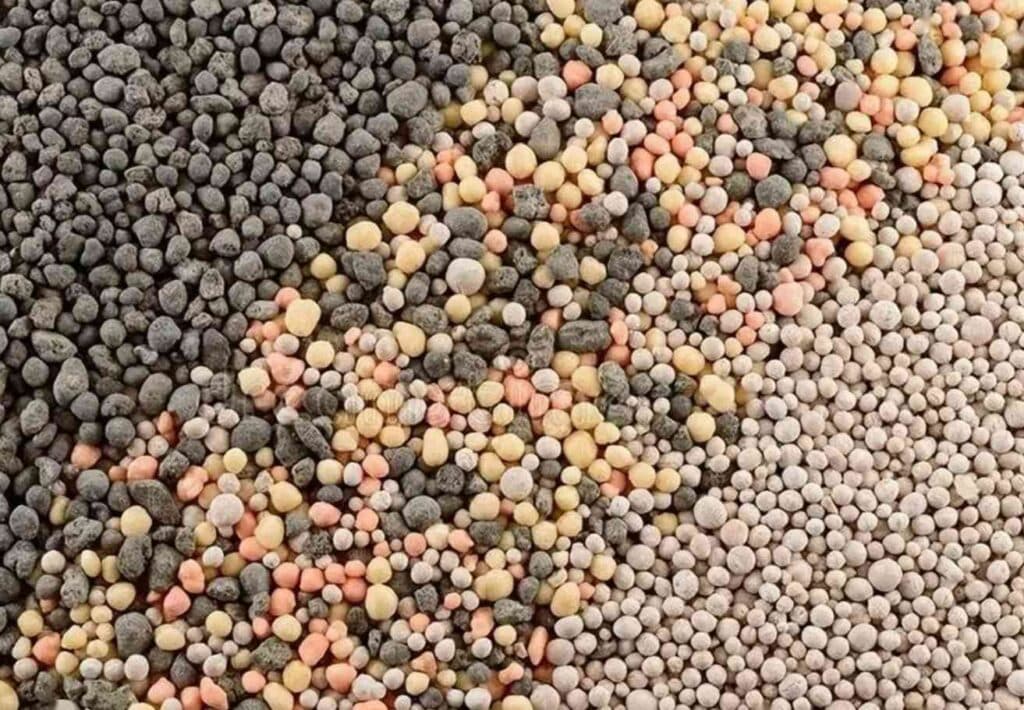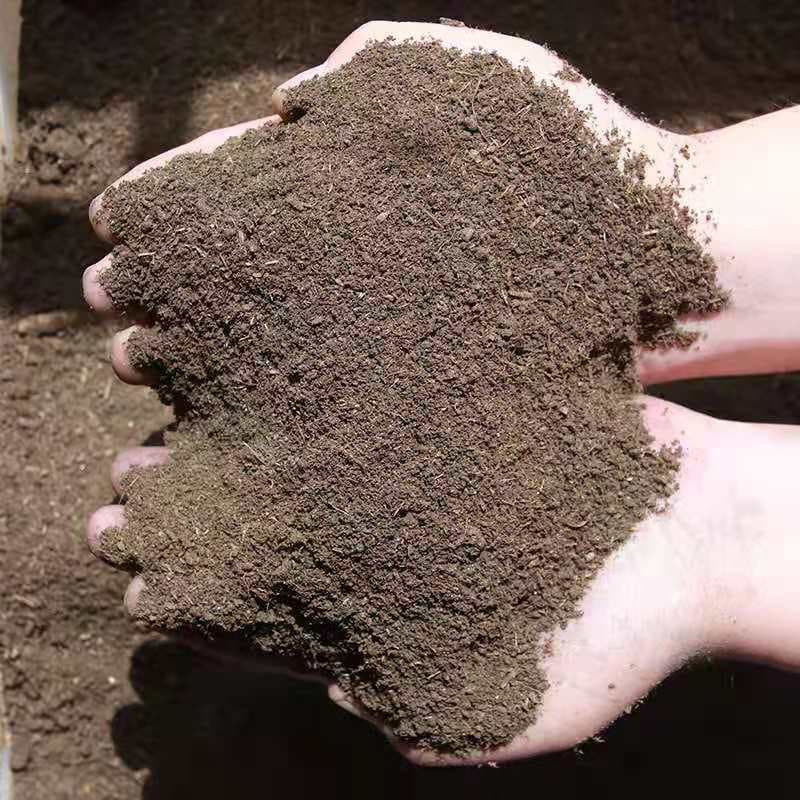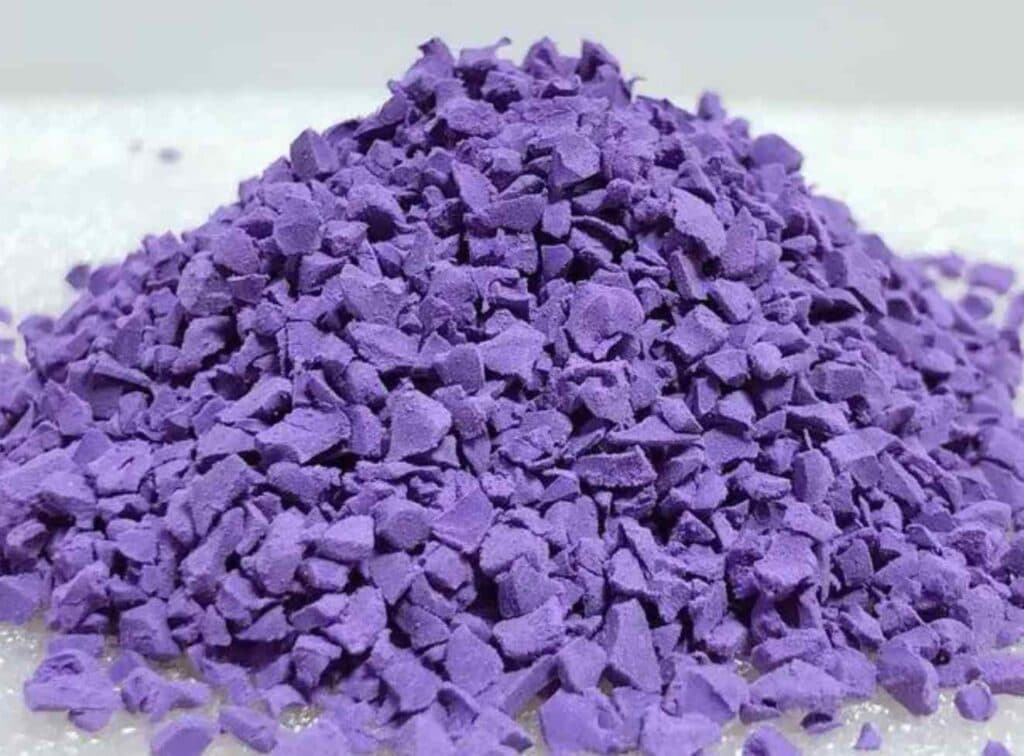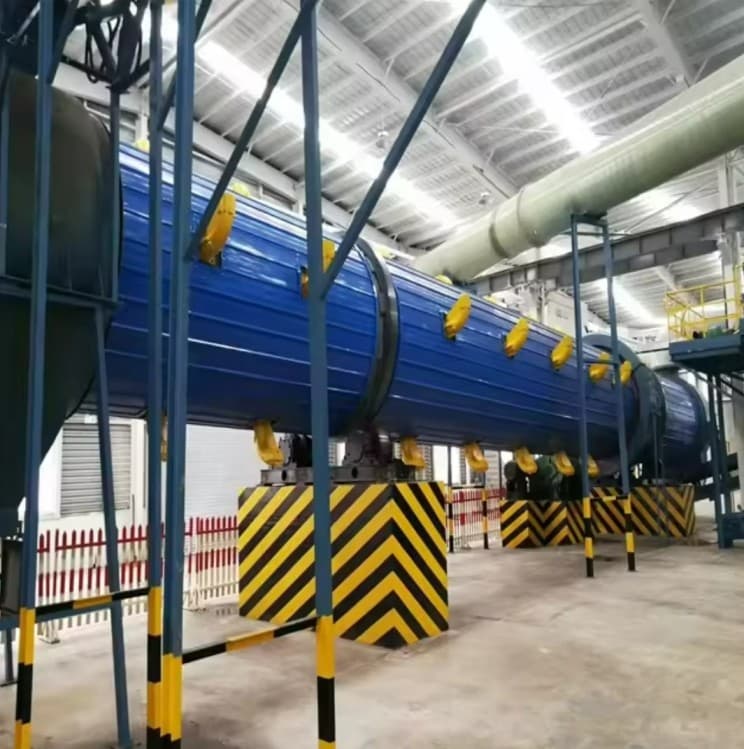Different Types of Fertilizers and How to Choose the Right One for You?

What are the types of fertilizers and how to choose the right one?
Fertilizers are an essential auxiliary additive for plant growth and development and plays a very important role in modern agriculture. Farmers in China mainly use two types of fertilizers, one is organic fertilizer and the other is inorganic fertilizer. The organic matter in organic fertilizers such as chicken manure, cow manure, and sheep manure can be slowly released over time, while inorganic fertilizers are characterized by “fast”. Inorganic fertilizers are also called artificial fertilizers, and their characteristics are that they can be released quickly. Nutrients, quick results. From a long-term perspective, organic fertilizers are undoubtedly better for soil nutrient balance and ecosystems. The promotion of modern precision fertilization technology has greatly improved the effectiveness of fertilizer use and achieved soil nutrient balance to the greatest extent.
Why are there so many types of fertilizers on the market?
The healthy growth of plants requires a variety of nutrients, which are mainly conducted from the soil to the plant body through the plant’s root system. However, this process is unsustainable, and nutrients in the soil are depleted every time a plant crop is harvested because the total amount of matter in the universe is constant according to Einstein’s Big Bang theory of junior high school physics. If it is not replenished in time, the potential productivity of the soil will gradually decrease, and the quality of the crops grown the next year will decrease. So to solve this problem, it is crucial to choose the appropriate type of plant fertilizer, which can effectively replenish the missing nutrients in the soil, which is why developed countries such as the United States do not conduct continuous sowing on the same land.
Whether they are organic fertilizers or inorganic fertilizers, their main function is to provide plants with three major nutrients: nitrogen (N), phosphorus (P), and potassium (K), as well as other micronutrients. The reason why there are many types of fertilizers used in agriculture is mainly because different plants require completely different nutrient contents and the methods of obtaining nutrients for different plants are also different.
The choice of fertilizer type is influenced by many external factors, such as the quality of the soil, the types of crops grown, and the specific method of application. Therefore, there is a wide variety of fertilizer products on the market, allowing farmers to choose the most suitable fertilizer for their crops according to different crops and soil conditions. Of course, there are also economic considerations. If a certain crop does not require a variety of nutrients, then farmers are wasting money buying fixed-formula fertilizers.
Inorganic fertilizer
Inorganic fertilizers, also known as synthetic fertilizers or artificial fertilizer, are chemicals made from the natural elements nitrogen, phosphorus, and potassium, the three nutrients most needed by plants. The main purpose of synthetic fertilizers is to meet the macronutrient needs of plants. The three elements nitrogen, phosphorus, and potassium correspond to the roots, stems, and leaves of plants respectively. Inorganic fertilizers have the advantages of low production price, simple use process, and very fast absorption rate by plants. However, it should be noted that inorganic fertilizers generally have a pH value of less than 7, and their acidic properties sometimes kill microorganisms that are beneficial to plants. In addition, excessive use of synthetic fertilizers can lead to environmental pollution and global warming. Environmental pollution refers to the nutrient imbalance of the soil. Environmental pollution is mainly reflected in the production process of inorganic fertilizers, which produce many harmful substances.
What is phosphate fertilizer?

The function of Phosphate fertilizer is to strengthen the stems of plants. Unlike nitrogen fertilizer, Phosphatic fertilizer is needed at every stage of the plant growth cycle because Phosphorous fertilizer can improve the success rate of plant reproduction and flowering results. However, compared with nitrogen fertilizer, the Phosphatic compound has very few nutrients. It is difficult to affect plant tissues other than stems such as leaves. Phosphorus supplements come in a variety of chemical and physical forms. Single superphosphate (SSP), triple superphosphate (TSP), diammonium phosphate (DAP), ammonium dihydrogen phosphate (ADP) and ammonium polyphosphate (APP) liquids are the most widely used types of P-fertilizer. To maximize the effect of phosphate fertilizer, and taking into account the slow effect of Phosphorus-based fertilizer, many farmers in China will choose to apply phosphate fertilizer before planting, that is, as a base fertilizer or choose a slow-release method. Although the effect is slow, the continuous effect of Phosphorus-containing fertilizer long time.
What are the types of potassium fertilizers?
Potash fertilizer will promote healthy plant leaf development. Potash fertilizer can also effectively improve plant resistance to various diseases and improve plant photosynthesis capabilities. If plants lack many types of nutrients, Potassic fertilizer is also a good choice and can be used as a buffer for the application of other fertilizers. Typical potash fertilizers include potassium chloride (KCl), potassium sulfate/potassium sulfate (K2SO4), and potassium nitrate (KNO3). They are all white powdery particles. Of course, they are not 100% pure potassium fertilizer and may also be adulterated. Some minerals.
Using the drone CCCA crop fertilizer effect monitoring system developed in China can help farmers apply potassium, nitrogen, and Potassium-rich fertilizers more accurately and intuitively. Since K-fertilizer stays in the soil for a very long time, it can be used less often. Compared with nitrogen fertilizer and phosphorus fertilizer, of course, this also depends on the specific crops, local soil conditions, and local climate conditions.
Traditional fertilization technology is relatively backward, and it is difficult to see the effect of fertilization in a short period after applying Potassium-based fertilizer. By using the latest CCCA drone high-altitude capture images and algorithms, the application in the target area can be observed in real-time. The rise after adding fertilizer can determine which areas of the field are more and less productive. With this data, CCCA can re-fertilize less productive areas with pesticide drones and use the data to maximize the cost-effectiveness of soil testing by locating sampling areas. Visualize data to estimate potential savings from VRA (Variable Fertilizer Rate) compared to uniform rates and target the application of phosphorus and Potassium supplements.
If your plant is deficient in potassium, the edges of its leaves will turn yellow or brown. If left untreated, the leaves will wither and fall off. Therefore, the role of potassium fertilizer can be summarized as follows:
1. Plant roots: Potassium fertilizer has the effect of stimulating the growth of plant roots, allowing the roots to penetrate deeper into the soil to absorb more nutrients and water.
2. Improve plant disease resistance: Potassium can promote the metabolic activity of plant cells and the plant’s carbohydrate transport and accumulation, and enhance the plant’s resistance to disease, drought, cold, and other stresses.
3. Promote plant fruit development: Potassium fertilizer can promote the rapid growth, enlargement, and maturity of fruits, and improve the yield and quality of fruits.—–Wikipedia
NPK compound fertilizer
NPK compound fertilizer is a compound fertilizer containing three components: N/P/K. It is generally made by steam drum granulation high tower melt granulation or spray granulation. Blended fertilizer has a variety of formulas based on different proportions of nutrients. Why are there so many formulas? The main reason is to comply with the needs of farmers, or more precisely, to better match the nutritional needs of different plants. So multi-nutrient fertilizers are usually designed to meet the needs of specific crops growing in specific soil types. The 10-10-10 formula of Balanced fertilizer can be used on most plants and soil types. Soils with insufficiently balanced nutrients or soil types that cannot retain nutrients well, such as sandy soil or clay, will need 0-10-20 or Other formulas of elemental fertilizers
What is Sulfur/Magnesium/Calcium/Secondary Element Fertilizer
Secondary nutrient fertilizers such as sulfur (S), magnesium (Mg), and calcium (Ca) are generally mixed with essential nutrient fertilizers such as nitrogen, phosphorus, and potassium. Sulfur is often contained in nitrogen fertilizers such as nitric acid and urea. Fertilizers that contain sulfur include superphosphate (SSP), sulfate of potassium (SOP), and potassium magnesium sulfate (PMS). Magnesium-containing fertilizers include magnesium sulfate (magnesium sulfate monohydrate). Calcium-containing fertilizers such as calcium nitrate, lime (calcium carbonate), and gypsum (calcium sulfate) are mainly used for soil remediation.
What are trace element fertilizers?

Micronutrient-type fertilizers contain nutrients that are essential for plant growth but are only needed in trace amounts: iron (Fe), manganese (Mn), molybdenum (Mo), boron (B), zinc (Zn), chlorine (Cl), and copper ( copper). Due to the need for trace amounts of micronutrients, generally about 1kg of trace elements is added to one ton of nitrogen, phosphorus, and potassium compound fertilizer, which is added through a trace element weight loss scale at the front end of the compound fertilizer granulator. Generally, trace element fertilizers are applied through foliage. It is not recommended to apply fertilizer by burying it in the roots of plants.
Functions of nutrients in plants
| Nutrients | Function for plants |
|---|---|
| Carbon (C): | Carbon is the key element that constitutes organic compounds. Plants convert carbon dioxide into organic matter through photosynthesis, which is supplied to the plant for growth and metabolism. Carbon also affects the synthesis and decomposition of chlorophyll in plants, thereby affecting the efficiency of photosynthesis. |
| Hydrogen (H): | Hydrogen is an important component in plants and mainly exists in water molecules. Water is the basis for photosynthesis and nutrient absorption by plants, and is also involved in plant metabolism and material transport. |
| Oxygen (O): | Oxygen is an important player in plant respiration and photosynthesis. During respiration, plants absorb oxygen and release carbon dioxide. During photosynthesis, plants absorb carbon dioxide and release oxygen. |
| Nitrogen (N): | Nitrogen is an important element in plants. It is a component of biomolecules such as amino acids, nucleic acids, chlorophyll and proteins. Plants meet their nitrogen needs by absorbing ammonia nitrogen and nitrate nitrogen from the soil. Nitrogen also affects plant growth and development, especially related to the plant’s chlorophyll content and photosynthesis. |
| Phosphorus (P): | Phosphorus is one of the main inorganic elements in plants and is absorbed in the form of phosphate. Phosphorus is a component of nucleic acids and energy molecules such as DNA, RNA, ATP and NADPH, and is also involved in photosynthesis and respiration of plants. |
| Potassium (K): | Potassium is the main cation in plant cells. It plays an important role in maintaining cell osmotic regulation, plant water balance, and nutrient transport. Potassium is also an activator of many enzymes, affecting plant growth and development. |
| Calcium (Ca): | Calcium is a secondary ion in plants. It plays a variety of important roles in plants. Calcium participates in the activation of dehydratase and the formation of cell walls, and plays a regulatory role in plant cell division, root growth and fruit development. |
| Sulfur (S): | Sulfur is involved in the synthesis of various biomolecules in plants, such as proteins, enzymes and vitamins. Plants absorb sulfur from the soil in the form of sulfate, which is essential for proper plant growth and development. |
| Iron (Fe): | Iron is one of the important trace elements in plants. It participates in plant respiration and photosynthesis, and plays a key role in the formation of plant chlorophyll content and leaf color. A lack of iron can cause yellowing of plant leaves and poor growth. |
| Manganese (Mn): | Manganese is one of the trace elements in plants. It participates in the water potential transport and photosynthesis of chlorophyll, affecting the growth and development of plants. |
| Zinc (Zn): | Zinc is one of the trace elements in plants. It participates in the growth, division and flowering of plants. Zinc is also a cofactor for some enzymes in plants and plays a key role in regulating enzyme activity. |
| Copper (Cu): | Copper is one of the trace elements in plants, involved in the activity of various enzymes and the sensitivity of plants to light. A lack of copper can cause photosynthesis and growth of plants to be inhibited. |
What are the types of organic fertilizers?

Organic fertilizer is a single-component fertilizer made from fermented plants or animal manure. It is easy to customize according to the unique nutritional needs of plants. Organic soil conditioners can be mixed with inorganic fertilizers to make organic-inorganic compound fertilizers. You can also add trace elements from plants and minerals to make liquid Organic compost.
The two main types of organic fertilizers are:
- Plant fermentation type: straw fermentation, kelp, kelp powder, molasses, etc.
- Animal dung type: chicken poultry, cow dung, sheep manure, animal dung.
Organic fertilizers are characterized by providing abundant macro, minor, and micronutrients to crops. In addition, organic fertilizers composed of Organic nutrients will not cause harm to the soil or microorganisms in the soil, creating an environment where beneficial bacteria, fungi, and insects can thrive, aerating the soil and increasing the drainage capacity of the soil. , and bring organic matter underground.
The characteristic of Organic matter is that it smells very bad because it is fermented feces, so it is inevitably accompanied by a smell. The second characteristic is that organic fertilizer takes longer to work than inorganic fertilizer, but it is more friendly to the soil in the long run. For crops that need to grow quickly, liquid natural organic fertilizers can speed up plant uptake, but they won’t last long.
Slow release fertilizer

Slow-release fertilizer also known as controlled-release fertilizer slows down the nutrient release rate of the fertilizer by adding a layer of synthetic resin or sulfur-containing polymer coating or multi-layer coating or substance on the surface or inside of the fertilizer. When exposed to moisture, heat, light, and /or soil microorganisms, Extended-release fertilizer degrade over time to provide nutrients to plants over a longer period. The purpose of continuous-release fertilizers is to meet the nutrient needs of plants throughout the growing season while reducing nutrient runoff and losses in the soil. However, the nutrient release rate and mode of Gradual-release fertilizers cannot be well controlled and are greatly affected by fertilization methods and environmental conditions.
What is nitrogen fertilizer?

As we mentioned in the previous paragraph, nitrogen fertilizer mainly targets the roots of plants. During the growth process of plants, a large amount of nutrients are needed to promote the growth of their root systems so that the plants have enough nutrients to maintain the growth of leaves and stems. China’s two most popular nitrogen-based fertilizers are high tower prilling fully water-soluble compound fertilizer and 15-15-15 npk compound fertilizer. The nitrogen fertilizer used more frequently in Europe is ammonium nitrate with two-state nitrogen content, also known as nitric acid and ammonium nitrate. calcium. Why do Chinese farmers like nitrogen fertilizer? Because China has a large arable land and population, farmers need fertilizers with high nitrogen content and quick results to improve economic benefits. Countries with less arable land prefer water-soluble urea fertilizer or urea ammonium nitrate aqueous solution because it is more friendly to the soil.
While most plants require Nitrogenous fertilizer to thrive, using too much Nitrogen supplement for succulents can cause root burn, which can lead to leaf necrosis and, in severe cases, plant death. To prevent this from happening, farmers generally apply nitrogen-rich fertilizer during the spring plowing season, when plant growth is most active, and the amount of application needs to be strictly controlled.
Other crops can use nitrogen fertilizer at the beginning of spring, and even some tenacious plants can use Ammonia fertilizer continuously throughout the season. To understand which plants are suitable for what amount of Ammonium fertilizer, our country has specially set up a research team to conduct controlled experiments and developed a unique system to divide the fields into 21 experimental areas through cloud-free aerial images taken by drones. To construct a vegetation map, the CCCA index is used to record the fertilization effect map of this area. CCCB is the area where the Normalized Vegetation Index is also known as NDVI in other countries.
Under the influence of soil type, climate, and N-fertilization methods, Ammonia nutrients in fertilizers will be lost through volatilization, leaching, denitrification, and fixation. This loss not only reduces the effectiveness of fertilization but also exacerbates global warming trends. To combat this problem, the agricultural community has come up with several solutions.
1. Foliar fertilization provides the nitrogen nutrients needed by plants through leaf absorption, thereby reducing the loss of nitrogen in the soil.
2. Use slow-release fertilizers and controlled-release fertilizers: they can continuously release nitrogen during plant growth, matching it with plant needs and reducing excessive nitrogen application.
3. In addition, adding urease and nitrification inhibitors can regulate and reduce nitrogen loss and help maintain a stable nitrogen supply in the soil.—–Wikipedia
What are the three main forms of fertilizer products?
Fertilizer products mainly come in three forms: solid granules, soluble powder, and liquid. Fertilizer in the form of solid granules is more common and is the most commonly used type. Granular fertilizer is simple and convenient to use. As long as it is sprinkled evenly on the field, it will naturally decompose with water. Granular fertilizer is very practical for field top dressing. Powdered fertilizer is easy to store, but it needs to be dissolved in water to be absorbed by plants, but the absorption rate is faster than granular fertilizer. Liquid fertilizers are inconvenient to transport and require spray tools to apply. Liquid fertilizers are quick to work, but expensive and difficult to apply evenly.
How to choose the type of fertilizer that’s right for you
Choosing the right type of plant fertilizer depends on many aspects, including the characteristics of the soil, the characteristics of the plant, the characteristics of the climatic conditions, and the specific nutrient needs of the plant’s growth stage.
Here are some steps to help you decide which type of fertilizer is right for you:
- Test the composition of the soil and make targeted selections: soil pH is different and nutrient content is also different, so the choice of fertilizer should be determined according to the acidity and alkalinity of the soil. Acidic soils are suitable for alkaline calcium-magnesium phosphate fertilizers, and alkaline fertilizers are suitable. The soil should be neutralized with an acidic fertilizer.
- Understand the specific nutritional needs of crops at specific growth stages: vegetables generally like nitrate nitrogen, so nitrogen fertilizers such as ammonium nitrate and calcium nitrate should be used; bulb vegetables have a large demand for sulfur, so fertilizers containing more sulfur should be used; Brassicaceae Vegetables have a large demand for boron, so it is better to use boric acid, borax, etc. that contain more boron.
- Choose a fertilizer type with an NPK ratio that matches your crop’s needs: Some plants, like leafy greens, need more nitrogen to thrive, while others, like flowers, may benefit from more phosphorus. For example, the production of garlic requires fertilizers with higher sulfur content, while the production of malting barley requires a reduced proportion of nitrogen fertilizers.
- When choosing compound fertilizer, you should also consider the impact of the variety you purchase on the environment. The production of high-nitrogen fertilizers mainly produces ammonia, carbon dioxide, nitrogen oxides, and other air pollutant emissions. Among them, ammonia is the most important pollutant. It will volatilize into the atmosphere during the production process, which will have a certain impact on the environment and human health. Therefore, to protect the environment, we try to reduce the use of nitrogen fertilizers and use organic fertilizers instead.
- Even if you use the right type of fertilizer for your crops, getting it right is crucial. By applying the right amount of fertilizer, you can prevent soil salinization, leaching, and other harmful effects of overfertilization. Today’s agricultural technology makes precise fertilizer application a breeze. In the long run, both yields and the environment will benefit.
Finally, remember that even when using the right type of fertilizer for your crops, the right dosage is crucial. By applying the right amount of fertilizer, you can prevent soil compaction, nutrient imbalances, and other harmful effects. Today’s drone CCCA farming technology makes precision fertilization a breeze. In the long run, both yields and the environment will benefit.

